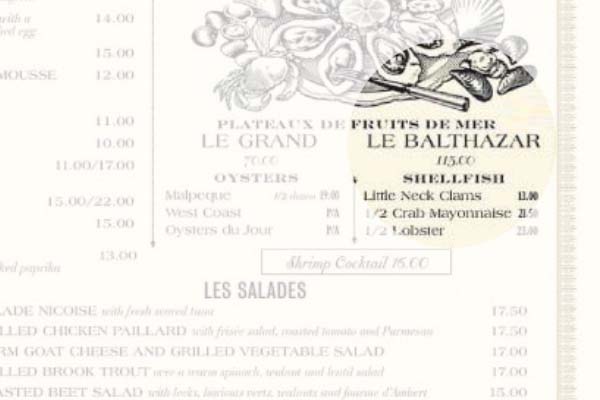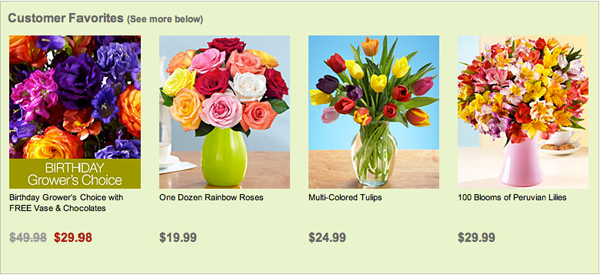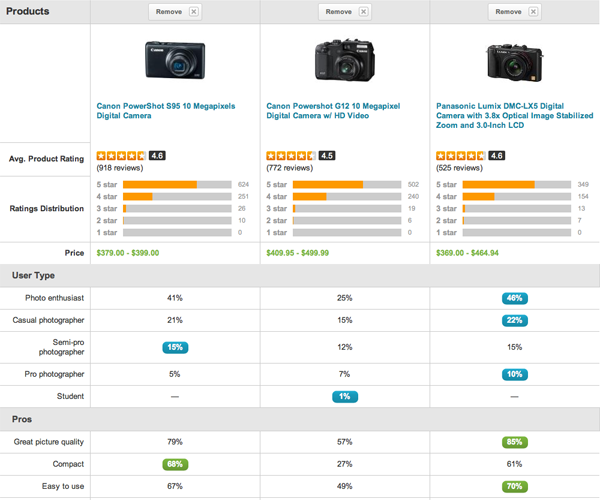People have trouble assigning value to stand-alone products. Your customers assign value to objects and services by comparing them to other products. This is what we call the concept of relativity. As designers and marketeers it’s our duty to help people make pleasant decisions. When a customer is satisfied and happy he or she will stay your customer.
We’re not good at absolute decision-making
Besides all the kinds of normal-priced dishes, many restaurants have one or two extremely expensive meals on top of their menu. Not many people will order those meals and the restaurant owner won’t mind either… There’s only one real reason for putting such a meal on the menu. By putting an $80 meal on the menu, the $30 dishes won’t feel that expensive anymore.

Anchoring
This is typically an example of ‘anchoring’. We place a little ‘anchor’ in our mind, all following information will be compared to that ‘anchor’. That’s why many shops always have all their products on sale – ‘From $12.99, Now $9.50’… The example below shows how ProFlowers makes use of this principle by starting a line of products with a really good deal, this not only affects the price-perception of the first product, but the whole line of products.

Food for thought
What if we not only use this principle to anchor the price, but other product specifications as well? Perhaps your webshop isn’t built to easily compare products. Imagine you sell computer hardware, why not add a little extra line to a harddisk page: ‘Most harddisks these days have 500GB capacity’. People can base their decision on that information from then on.
Comparison by numbers
In order to be able place that little ‘anchor’ in our own memory, we need information that can be quantified. Jonah Lehrer refers to this in one of his columns on Grantland, he calls it the horsepower mistake.
Choosing which car to buy is a tough decision, there’s many facts and features to keep in mind. Not all options can be quantified, but horsepower and fuel usage can. Research shows that we focus on the information that can be quantified. For us, this changes a tough decision into a simple calculation. Unfortunately, after a while you figure that you don’t like the dashboard that much and the seats hurt your back.
It’s a really great challenge to find a way to display and quantify product features that can not be quantified by them themself. I think Buzzillions did a really great job with this. They ask product reviewers to select the five best and five worst features. The advanced compare functionality enables people to place this information next to one another and shows which product scores best with which feature.

Framing
Decisions people make are for a large part influenced by the way we communicate the information. For example: People will buy meat more often when the packaging says ‘85% lean meat’ instead of ‘15% fat’. Patients are more likely to consider an operation when there’s an 80% chance of surviving instead of a 20% chance of dying…
Dan Ariely did an experiment on this. He asked 100 students to subscribe for a magazine ‘The Economist’. The possibilities we distributed as follows:
| Internet online membership | $59 | 16 students |
| Paper version membership | $125 | 0 students |
| Paper and Internet online membership | $125 | 84 students |
This seems completely logical. Students had a feeling they would have a nice benefit when going for the 3rd option instead of the second. This made them neglect the first option. Ariely proved it by taking a second test without the 2nd option (Paper only).
| Internet online membership | $59 | 68 students |
| Paper and Internet online membership | $125 | 32 students |
Where anchoring sets a certain value as a reference point, framing concerns the way the message itself is formulated.
Help customers make satisfying decisions
As an interaction designer for websites and mobile I try to help people make the right decisions. In case of a webshop this be choosing the products that suits their needs best. This is really nice challenge and make me consider this:
- What’s the anchor (reference point) people will enter the site with?
- How do I present all possible options?
- Can website visitors quantify the information they see?
- When quantification is not possible, are the other ways to visualize or explain them?
Principle like these should always be considered with great care, as a designer or marketeer it’s your duty to do good and no harm. By designing for decision moments you the chance to stimulate decisions which do both good people and business.
Sources
Seductive Interaction Design: Creating Playful, Fun, and Effective User Experiences door Stephen P. Anderson
Power of Comparison
Paradox of Choice: Why more is less door Barry Schwartz
Nudge: Improving decisions about health wealth and happiness door Richard H. Thaler en Cass R. Sunstein
Photograph by Garry Knight.